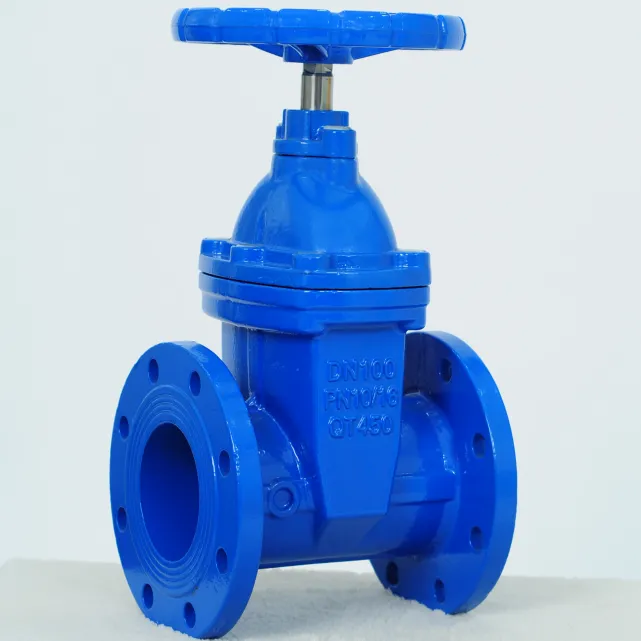check valve with orifice
Understanding Check Valves with Orifices A Comprehensive Overview
Check valves are critical components in various fluid systems, ensuring that liquid or gas flows in only one direction. When combined with orifices, these valves offer enhanced functionality for controlling flow rates and preventing backflow. This article delves into the concept of check valves with orifices, examining their design, applications, advantages, and considerations.
What is a Check Valve?
A check valve, also known as a one-way valve, is designed to allow fluid to flow in a single direction. It opens under pressure from the upstream flow and closes when the flow reverses, effectively preventing backflow. The primary function of a check valve is to maintain system integrity and prevent contamination that can occur when fluid flows in the opposite direction.
The Role of Orifices
An orifice is a small opening that restricts flow and is often used to control the rate of fluid passing through a system. When integrated with check valves, orifices serve multiple purposes, such as regulating flow rates, reducing pressure surges, and promoting stable operation within fluid systems. By carefully selecting the size and shape of the orifice, engineers can create systems that meet specific hydraulic performance requirements.
Design Features of Check Valves with Orifices
The design of a check valve with an orifice typically includes the following features
1. Valve Body The structure houses the internal components, including the orifice and the check mechanism. Materials are chosen based on the type of fluid handled and the operating environment.
2. Check Mechanism This could be a ball, disc, or flap that moves in response to fluid pressure. It must seal tightly when flow reverses to prevent leakage.
3. Orifice Integration The orifice is strategically placed within the valve to control flow rates. Its dimensions can be tailored to achieve desired flow characteristics while accommodating the fluid's viscosity and temperature.
4. Sealing Elements These components ensure a tight seal when the valve closes, preventing contamination and loss of pressure. Common materials include rubber, PTFE, and other elastomers.
Applications of Check Valves with Orifices
Check valves with orifices are utilized in various industries and applications
- Pumping Systems These valves prevent backflow in pumping systems, protecting equipment from damage and maintaining efficiency by ensuring that pumps do not run dry.
- Water Supply In municipal water systems, these valves curb backflow to prevent contamination of clean water supplies.
check valve with orifice

- Chemical Processing They are integral in handling corrosive and hazardous fluids, where maintaining the correct flow direction is crucial for safety
.- HVAC Systems In heating and cooling systems, check valves help control fluid movement, ensuring even distribution and efficient operation.
Advantages of Check Valves with Orifices
1. Flow Control By incorporating an orifice, these valves allow for precise management of flow rates, which is essential in numerous applications to maintain system stability.
2. Backflow Prevention The specialized design guarantees that backflow is efficiently mitigated, protecting downstream components from potential damage.
3. Energy Efficiency Properly designed check valves with orifices can reduce energy costs by decreasing the need for additional pumps or pressure regulation devices.
4. Versatility These valves can be adjusted to accommodate specific application requirements, making them suitable for a wide range of fluids and pressures.
Considerations When Selecting Check Valves with Orifices
When selecting a check valve with an orifice, several factors must be assessed
- Fluid Characteristics Consider viscosity, temperature, and potential for sediment or corrosive elements.
- Pressure Ratings Ensure the valve can handle the system's maximum operating pressure and any potential pressure spikes.
- Material Compatibility Select materials that can withstand the chemicals in the fluid without degrading.
- Installation Orientation Some check valves have orientation requirements that must be adhered to for optimal performance.
Conclusion
Check valves with orifices represent a sophisticated solution for fluid management in various industrial applications. Their ability to prevent backflow while controlling flow rates makes them indispensable in maintaining safe and efficient fluid systems. Understanding their design, functionality, and unique applications can help engineers and technicians make informed decisions in system design and maintenance.
-
Breakthrough in Domestic Low Temperature Valve Technology in ChinaNewsAug.18,2025
-
From Machinery to Intelligent Brain: The Digital Transformation Wave of the Valve IndustryNewsAug.18,2025
-
PCVEXPO 2025NewsAug.18,2025
-
The Key to Fluid Control: Exploring the Advantages of Ball Valves in Industrial SystemsNewsJul.09,2025
-
The Versatile World of 1, 2, and 3 Piece Ball ValvesNewsJul.09,2025
-
Stainless Steel Ball Valves: The Ideal Choice for Efficient Flow ControlNewsJul.09,2025
-
Optimizing Fluid Control with Ball Float ValvesNewsJul.09,2025




